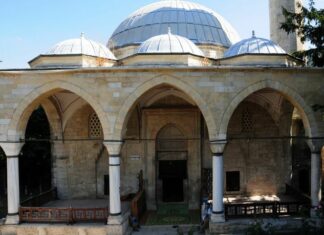Athenian Society and Social Classes
The Court Set
Athenian society, like that of many countries, is divided into social groups or “sets.” The highest and most exclusive group is the...
Democracy in Greece
A True Democratic Spirit
Greece is one of the truest democracies in Europe. Few other countries, not even Norway, show such devotion to the will...
Athens between the Ancient Spirit and Modern Life
The Old Streets of Athens
In the older parts of Athens, the streets are narrow and often dirty. Strong odors rise into the air, making...
The Library in Pergamum
History and Importance
In the second century B.C., King Eumenes II built a famous library on the eastern side of the Athena temple in Pergamum....
The Altar of Zeus
Overview of the Altar
The Altar of Zeus is the most impressive structure on the mountain in Pergamum. It was built by Eumenes II, but...
The Asklepeion in Pergamum
Overview of the Asklepeion
The Asklepeion in Pergamum was a famous medical center built during the second century A.D., shortly after the time when John...
Parthian Prosperity and Eastern Challenges
Parthian Rule in Seleucia
Seleucia, the key commercial center of Iraq, thrived even more under the Parthians than it did under the Seleucids. In the...
Maccabean Struggles and Parthian Rise
Jonathan’s Leadership and Tragedy
Both Alexander I and Demetrius II sought allies, leading to favorable peace terms with the Maccabees. Jonathan became the civil and...
Parthian Expansion and Seleucid Decline
Seleucus II’s Eastern Campaign
Initially, the Seleucids were preoccupied with challenges in the west. Around 232 or 231 B.C., Seleucus II ventured eastward to quell...
Small But Yummy
How do you eat finger-food with style and finesse?
Our expert offers some tips on how to eat classy snacks with dignity.
They`re the tiny snacks...













